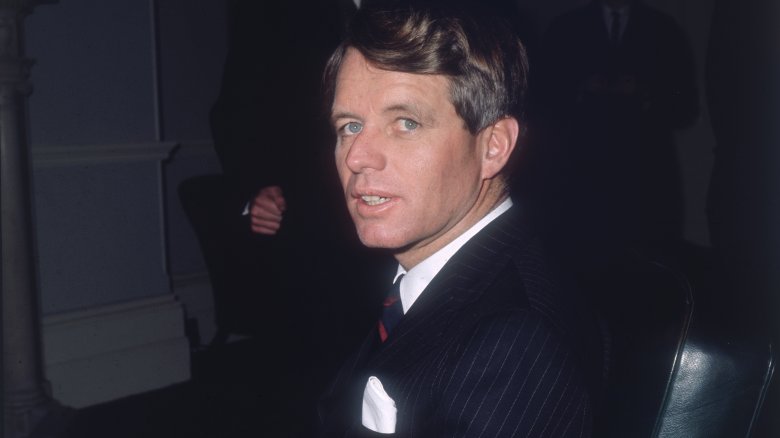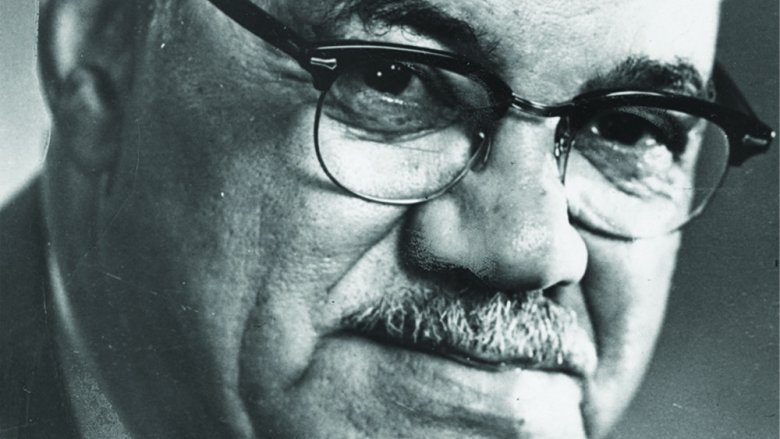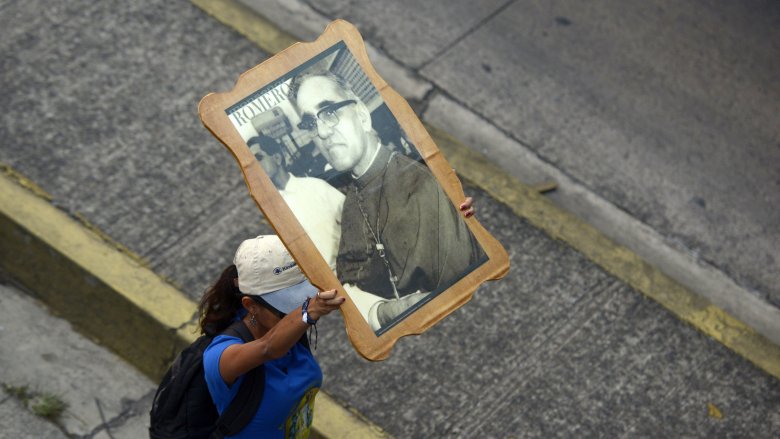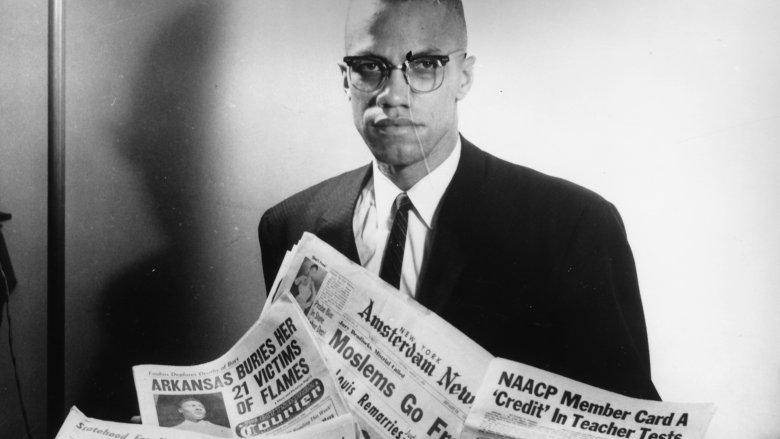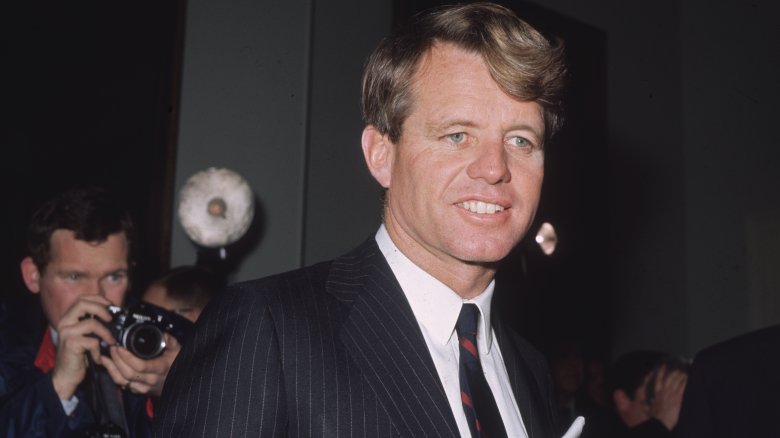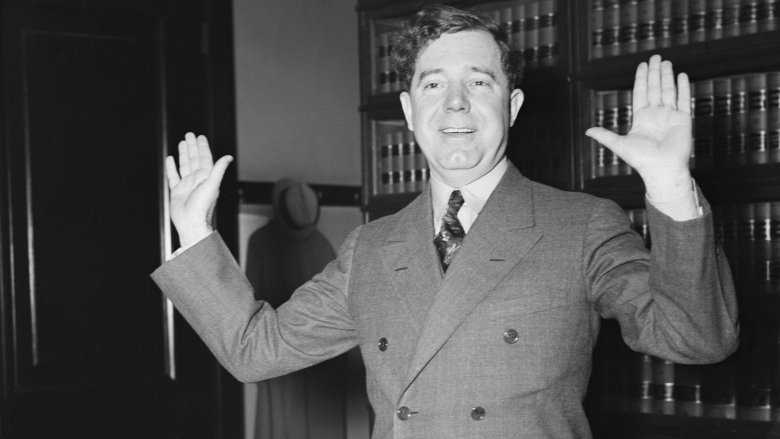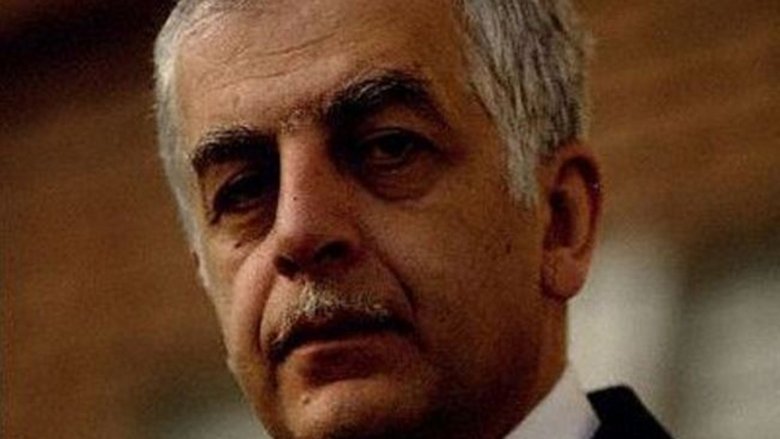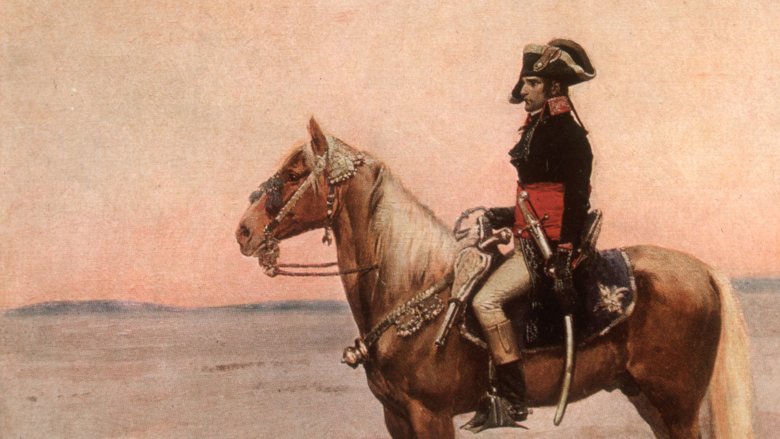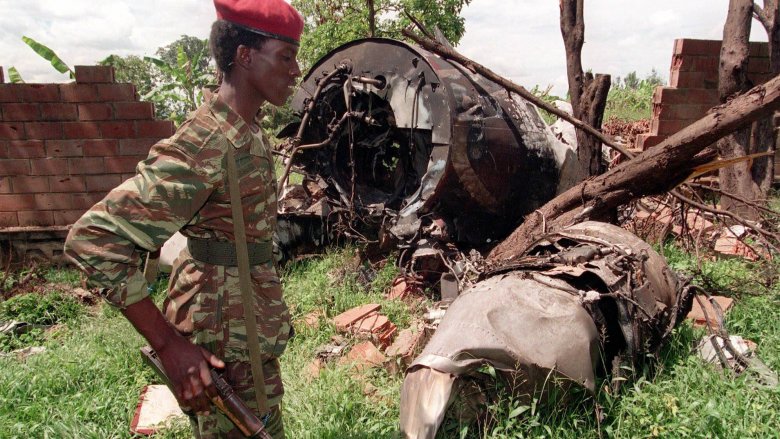Mysterious Political Deaths That Still Don't Add Up
Any good leader is going to have enemies. It's part of the job. However, no matter what country you call home, rising through the political ranks comes with enormous risks, particularly when it comes to one's personal safety. While the assassination of President John F. Kennedy is still one of the most mysterious events in recent history, JFK is far from the only major political leader to die under shady circumstances.
Cleopatra
There are very few historical figures as iconic as Cleopatra. Not only was she the last active pharaoh of ancient Egypt, but her tragic story has been memorialized in countless plays, books, and movies. Everyone knows the ending, of course: As her empire fell away, Cleopatra committed suicide by pressing a venomous cobra to her breast. Except, well ... this epic climax might just be a myth.
First of all, why would she kill herself with a snake? In an interview with CNN, Professor Christoph Schaefer of Trier University pointed out that death by Egyptian cobra venom is long, painful, and — most importantly — not always a sure thing. Cleopatra was quite savvy in the art of poisons, and probably wouldn't put herself through such prolonged misery. Instead, Schaefer believes she might've poisoned herself with a mixture of wolfsbane, hemlock, and opium.
Now, that's assuming she killed herself in the first place. What if she was murdered? Criminal profiler Pat Brown looked into the case in 2013, according to the Smithsonian, and she reported being "shocked at the number of red flags." Brown has suggested the possibility that Cleopatra was actually murdered by Octavian, after which the Roman Empire rewrote her death as a romanticized suicide. We'll probably never know the full details, but there's definitely some sketchiness going on with the historical record.
Leon Jordan
In the dark morning hours of July 15, 1970, a gunshot shattered the murmur of a Kansas City night. A black politician and former policeman named Leon Jordan was murdered with a shotgun, according to the Kansas City Star. The murder weapon, fingerprints, and getaway car turned up shortly afterward. Bizarrely, no one was ever convicted.
Jordan had been a notable civil rights activist, and the strange handling of his murder case drew a lot of questions. One of Jordan's political rivals has claimed to have heard that there was a "contract" out on Jordan's head. Some said the men who attacked Jordan were black, but this wouldn't be the first occasion where black men were blamed to cover the tracks of white murderers.
The mystery sat untouched for decades. In 2010, Kansas City Police refused to reopen the case, claiming that all the evidence — most notably, the murder weapon — had gone missing a long time ago. This excuse backfired, according to the Star, when the "missing" shotgun turned up in a police patrol car, having been in use for decades. The resulting probe found evidence that mob boss Nicky Civella gave his "blessing" for Jordan's assassination, according to the Missourian, but many details about the murder are still unknown. As for Civella, the New York Times reported that he died of cancer in 1983.
Uwe Barschel
The strange circumstances surrounding the death of West German politician Uwe Barschel are still debated to this day. As far as we know, the situation began in 1987, when a phone-bugging scandal forced Barschel out of office. The politician was called to the capital to testify about the matter, but as described by the New York Times, he never made it there. His corpse was found in a bathtub in Geneva, with no signs of drowning or bullet wounds. Suicide? Murder? To make things even more disturbing, there were reports that the reason Barschel had gone to Geneva was to meet up with a "mystery man," who supposedly was offering to help Barschel with his scandal case.
The official ruling was suicide, but the puzzle had — and still has — a lot of missing pieces. The most prevalent conspiracy theory is that Barschel may have been targeted by the Israel intelligence agency Mossad. Because public denials always make things better, in 2010 the Jerusalem Post reported that Israel Foreign Ministry spokesman Yigal Palmor publicly denied that Mossad had any involvement in Barschel's death. Denials are worth a shot, but they never seem to stop conspiracy theories.
Archbishop Oscar Romero
Archbishop Óscar Romero made a name for himself as an outspoken critic of the violence perpetrated by the military regime in El Salvador, earning a reputation as the "voice of those without voice." According to the Guardian, Romero was saying mass on the morning of March 24, 1980, when an assassin came to the church and shot him in cold blood. Romero's murder marked the beginning of even more bloodshed, as the Guardian also explains, because it led directly into a civil war that claimed 80,000 lives and left 8,000 people missing.
Though decades have passed, the details behind who ordered Romero's death are still murky, and the murder case is unresolved. Even though the United States publicly swore to avenge Romero's murder back when it first occurred, no one has ever been officially arrested for the crime. Furthermore, recent evidence has shown that the U.S. government bungled the investigation — whether intentionally or not — ignoring key evidence, and killing important witnesses instead of questioning them, including the very man who may have pulled the trigger.
The Archbishop himself is still remembered fondly and will likely be canonized as a saint in 2018, according to Catholic News Service.
Malcolm X
Malcolm X was one of the most influential men of the 20th century, as well as one of the most controversial figures of his time. When he left the Nation of Islam in 1964, the public feud that ensued drew headlines. Less than a year later, he was assassinated at the Audubon Ballroom, and authorities blamed the Nation of Islam. But in the years since, according to CNN, this far-too-convenient narrative has shown some holes.
Here's why. At that time, the FBI was monitoring Malcolm like a hawk. In 1964, Director J. Edgar Hoover reportedly told the New York office to, "Do something about Malcolm X, enough of this black violence in NY." Looking back on the Audubon Ballroom assassination, it's incredibly strange that no police officers were stationed at the entrance — normally, there would've been two dozen or so — and this is even stranger when one considers that just a week before, Malcolm's house had been firebombed. In the decades since, two of the men convicted for Malcolm's murder still deny that they were even present at the ballroom that day.
Put it all together, and you get an awful lot of bad coincidences. What makes the whole thing even more suspicious is that even today, as the Guardian points out, the NYPD still denies all requests to release its Malcolm X surveillance records to the public.
Robert Kennedy
Everyone remembers the shady circumstances surrounding the death of JFK, but the murder of his younger brother, Robert F. "Bobby" Kennedy, had its own weird mysteries. In 1968, Bobby Kennedy began seeking the presidency, hoping to heal the country's divisions. Instead, he was gunned down by a man named Sirhan Sirhan. But is the story really that simple?
Maybe not, according to CNN. One witness, a woman who volunteered on RFK's campaign, claims there was definitely a second shooter. She even goes so far as to state, "The truth has got to be told. No more cover-ups." Other witnesses have also claimed that the official report doesn't line up with their experiences.
That's just the beginning. As reported by the LA Times, one witness was a 15-year-old boy named Jamie Enyart, who snapped photos as the murder took place. Enyart's photos were confiscated by the police officers (allegedly at gunpoint) who said they needed to hold onto the evidence for 20 years. So Enyart waited for 20 years, then asked for his pictures back ... only to be told they were "lost." In response, he sued for $2 million, at which point the photos miraculously re-appeared. Then, even more bizarrely, the man who was hired to bring Enyart his photos got a flat tire on the way, got out of the car to check it, and then returned to find that the photos were "stolen." To this day, they've never been recovered.
Huey Long
When powerful political figures die in a cloud of mysterious circumstances, it's easy to assume that it was a targeted assassination. However, accidents can happen. For example, there's the case of Huey Long, known as "the Kingfish," a Louisiana senator (and former governor) who was aiming for the White House in 1936, according to HueyLong.com. Long's ambitions were cut short when he got into a fatal altercation with a young doctor named Carl Weiss. Dr. Weiss reportedly shot Long before he himself was gunned down by Long's bodyguards, according to the Times-Picayune.
Because both Long and Weiss had died, it was the bodyguards who told the story. Conspiracy theories abounded, with countless people guessing at Dr. Weiss' motivations. But as time went on, a stranger possibility emerged: What if Long's death was a mistake?
As the Times-Picayune reported, the story of Carl Weiss wasn't properly investigated until 1960. Further examination made it clear that while Weiss definitely did attack the senator, it's not so clear that he ever shot at him or intended to cause any fatal harm. Many believe now that Long's mortal wounds may have been caused by accidental misfires from his own bodyguards, who then blamed the deceased Weiss for the fiasco.
Zviad Gamsakhurdia
Even though the first president of Georgia, Zviad Gamsakhurdia, ran away with 80 percent of the vote, Australian Broadcasting Corporation points out why his legacy ended up being highly controversial. One camp calls him "the father of Georgian independence" because he was the one who led the nation following its 1991 exit from the Soviet Union. On the other hand, his critics accused him of becoming a dictator. During his time in office, discontent grew big enough that an armed rebellion forced him to flee his own country. On New Year's Eve 1993, Gamsakhurdia was found dead from a gunshot wound to the head. To this day, the questions surrounding his mysterious death are still unresolved.
The story has grown even stranger in the years since. Over the last few decades, Gamsakhurdia's body has been buried, dug up, and reburied four times in four separate locations, according to Reuters. In 2010, his widow Manana and a crowd of supporters attempted to exhume him a fifth time as a protest against her son's imprisonment, but this effort was broken up by the police.
Napoleon
Napoleon Bonaparte faced his great defeat at the Battle of Waterloo, but he didn't die there. His life ended years later on the South Atlantic island of Saint Helen, where the former conqueror had been forcibly exiled for the rest of his days. According to the official autopsy, Napoleon died not in a blaze of glory but from a painful bout with stomach cancer. Now, as Napoleon.org points out, stomach cancer did run in his family, so it would seem like an open-and-shut case. Nonetheless, there are centuries of theories regarding whether Napoleon died in a more sinister fashion.
Here's the twist, as described by the American Museum of Natural History: Three weeks before he died, Napoleon wrote, "I die before my time, murdered by the English oligarchy and its assassin." This quote led many to believe he was poisoned. Tests have shown that Napoleon's corpse tested positive for arsenic, found both in his hair and in the bizarrely preserved state of his corpse in 1860, a condition called arsenic mummification. The problem is even with those results, there's no proof that anyone tried to kill him. Arsenic was used in everything from wallpaper to medicine back then, so Napoleon could've been exposed to it for years without any ill intent.
Juvenal Habyarimana
One of the most horrific catastrophes of recent times was the Rwandan Genocide, which stole the lives of 800,000 people, according to the Globe and Mail. The event that triggered it all was the 1994 death of Rwandan President Juvenal Habyarimana, whose plane exploded when it was hit by two missiles. Ever since, Rwanda has been haunted by the question of who fired the missiles, why they did it, and if they're still part of the government today.
The man most commonly accused is Paul Kagame, who took over as president in 2000 and is still going strong as president. Kagame is one of the most powerful people on the continent, and it's argued that he may have assassinated Habyarimana in a bid for political power. Though there is evidence to support this conclusion, Kagame denies the allegations, claiming the missiles were fired by Hutu extremists. In 2017, as the Globe and Mail reported, a missile launcher was found that was very similar to the one used in 1994, which could help reveal clues about where the original launcher came from. Either way, the investigation continues to this day.
